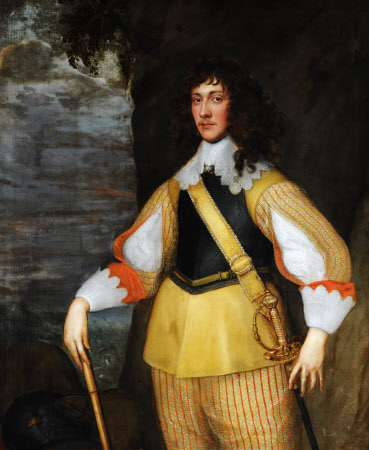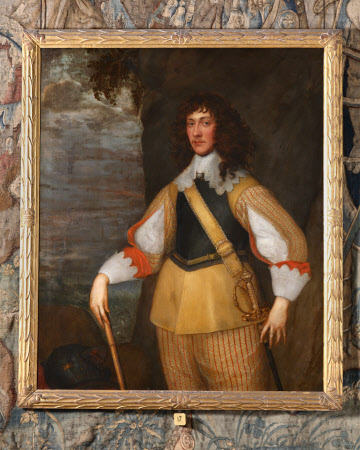Colonel, Lord Charles Cavendish (1620-1643)
British (English) School
Category
Art / Oil paintings
Date
1640 - 1643
Materials
Oil on canvas
Measurements
1270 x 1016 m (50 x 40 in)
Place of origin
England
Order this imageCollection
Hardwick Hall, Derbyshire
NT 1129110
Caption
The sitter in this portrait has assumed various different identities, but it seems most probable that he is Charles Cavendish (1620-1643), the second son of William Cavendish, 2nd Earl of Devonshire (1590-1628) and his wife, Christian Bruce (1595-1675). In 1638 he went on the Grand Tour, during which he roved as far afield as Greece, Egypt, and - reportedly- Babylon. After his return in 1641, he served in a campaign under the Prince of Orange on the Continent, and after the outbreak of the Civil War as a volunteer under Lord Bernard Stuart. He enjoyed a successful military career, dying on 28 July 1643 when trying to prevent Cromwell from raising the siege of Gainsborugh. He was described in his funeral sermon, preached by William Naylor, as ‘the soldier’s mignon and his Majesty’s darling.’
Summary
Oil painting on canvas, Colonel, Lord Charles Cavendish (1620-1643), British (English) School, 1640-1643. A three-quarter length portrait, against a landscape background, standing, turned slightly to the left, gazing at spectator, dark curly shoulder-length hair and wearing buff-coloured doublet and breastplate, white shirt, gold and red embroidered sleeves and breeches, and white lace shoulder-collar; a baton in his right hand, his helmet, left. The sitter was was born the second son of William Cavendish, 2nd Earl of Devonshire (1590-1628) (then still Lord Cavendish) and his wife Christian Bruce (1595-1675). The Prince of Wales (later Charles I) was his godfather. In 1638 he went on the Grand Tour, during which he roved as far afield as Greece, Egypt, and - according to the account given by Edward Lyte to his cousin John Aubrey - Babylon. He did not return to England until May 1641. After his return, he served in a campaign under the Prince of Orange on the Continent, and after the outbreak of the Civil War as a volunteer under Lord Bernard Stuart. He so distinguished himself at Edgehill, in 1642, that he was first given the command of the Duke of York's troop, and then, after a disagreement, was given a commission to raise a regiment of horse in the North. Having established himself at Newark, he was appointed commander-in-chief of the forces of Nottinghamshire and Lincolnshire, with the rank of Colonel-general. In March 1643 he took Grantham, and in July, Burton-on-Trent, when escorting the Queen from Newark to Oxford, but then died 28 July 1643 when trying to prevent Cromwell from raising the siege of Gainsborough. Described in the funeral sermon preached by William Naylor in 1674 as 'the soldiers' mignon and his majesty's darling'.
Provenance
In 1811 inventory; and thence by descent until, following the death of Edward William Spencer Cavendish, 10th Duke of Devonshire (1895 - 1950), Hardwick Hall and its contents were accepted by HM Treasury in part payment of death duties and transferred to the National Trust, in 1959
Credit line
and thence by descent until, following the death of Edward William Spencer Cavendish, 10th Duke of Devonshire (1895 - 1950), Hardwick Hall and its contents were accepted by HM Treasury in part payment of death duties and transferred to the National Trust, in 1959
Marks and inscriptions
Recto: Inscribed in pencil on old strip of paper, and again in heavier pencil on stretcher: Portrait of a General Recto: Tablet attached to bottom centre, inscribed in black on gold: 26. CHARLES BOYLE LORD CLIFFORD
Makers and roles
British (English) School, artist Cornelis de Neve ( fl. Antwerp 1612-Antwerp 1678) , artist

